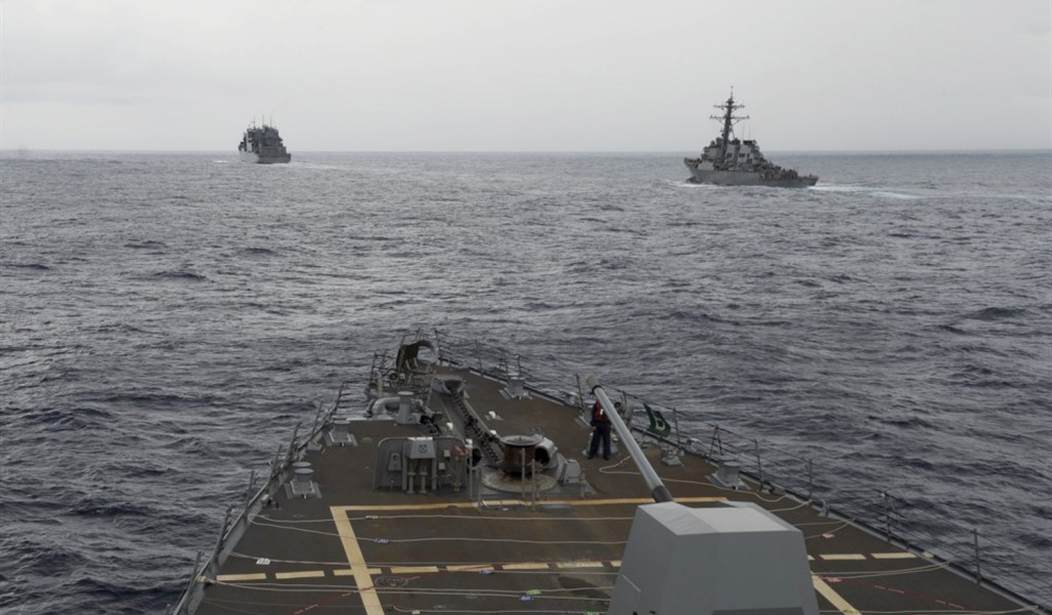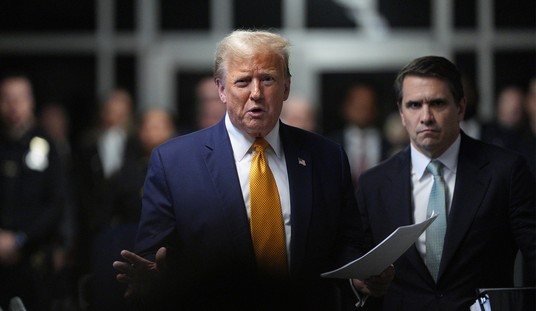Thinking about the new Trump Navy, in context of a totally rebuilt military, less focused on intervention than deterrence, one immediately faces dilemmas. How do we prepare for a two decade reconstruction of diminished and necessary capabilities, while reforming a slow, unresponsive and costly procurement process? How do we reestablish deterrence among Big Powers, where conflicts can be triggered by maritime access, electronic swordsmanship, space-based asset control, at a time of asset and operational gaps?
More dilemmas: How do we keep peace from a distance, including assurance that aircraft carriers have reach and freedom from land-based missiles, while rebuilding our ability to act fast, if needed? How do we accelerate creation of Virginia-class attack submarines, needed for global presence and credibility, while also accelerating replacement of Ohio-class nuclear ballistic submarines? How do we protect America in the moment, while assuring our future? How do we do all this without breaking the bank, advancing management reform to make the build-out cost-effective?
These are just the opening dilemmas confronting those charged with “making good” on President Trump’s commitment to rebuild our Navy – suffering badly from weak, distracted civilian leadership. With these dilemmas come other problems, a need to raise morale, elevate recruiting and retention, retooling training, and rethinking strategic and tactical priorities – enough to fill several dozen briefing books.
Even as this administration leans into old problems, new one are washing over the gunnels, from state-based cyber threats to counter-intelligence, from emerging C4ISR challenges (Command, Control, Communications, Computers, Intelligence, Surveillance and Reconnaissance) to assuring space dominance, from matching short-legged Navy planes with Air Force refueling capability to “thinking around corners” to improve expeditionary capabilities, from extinguishing ISIS to motivating, engaging and reassuring allies. No, the world is not getting simpler. It is more complex and in aggregate, more dangerous.
Recommended
But there is genuine hope, and a basis for optimism. America is at an inflection point – one not to be lost. Answers are simple and …not quite so. On the simpler side, as domestic Federal overreach is reduced, domestic departments downsized, tax reform and private investment induced, and America’s growth accelerates, so will tax revenues. As this happens, we must recommit to both debt reduction and our own defense. We cannot look away from gaps any more. If we start from the popular will to be secure, and realize that the US Navy plays a big role in our security, we have made the first step. Perhaps this occurred, to some degree, on November 8th.
Congress must now drop sequestration and “politics as usual,” working with President Trump to strategically up-fund the gaps, while assuring procurement reforms are enacted or pursued. In that process, the Navy and other services should work to tighten their integration, not because Congress wants that, but because it benefits all operations. Cross domain support is one key to the future, not a luxury, but a necessity.
With the end of capricious defense cuts, a return to strategic planning and tighter procurement, money will be saved for reallocation; we did this mid-decade at the State Department, and the principle works anywhere. But let’s also be honest: Ending waste, duplication and bureaucratic tricks for hiding money, not close all gaps. Congress must recommit to filling these gaps.
Among pressing needs is a re-look at ship and submarine numbers, capabilities and reach – with special focus on replacement timing, and how to accelerate programs like the Virginia-class attack submarines and replacement of Ohio-class nuclear ballistic missile submarines. Protecting and deploying aircraft carriers is also vital. If more money is not the answer, it will help get to the answer.
With restored naval and military power, America must convert credibility into deterrence – consciously. To do this, several innovations are inevitable. We must communicate goals to the American public, and continue building buy-in. We must embrace greater defense-wide coordination, diminish inter-service stove-pipes, while also thoughtfully preserving service traditions; they are important, and needed in this process. Without motivated people, nothing happens.
Strategically, credible reach and power projection lowers the need for intervention, and we have to lean into that reality. History teaches this, from ancient times through Theodore Roosevelt and Ronald Reagan; some principles do not change. A corollary is that better coordination between Defense and State will allow a credible Navy and national defense to leverage more diplomatic wins.
President Trump may be able to score a reversal of bad agreements, and creation of good ones on the strength of renewed military credibility. Diplomacy must have back-up; once diplomacy has back-up, it should advance, from burden sharing to regional security, respect for rule of law and navigation to democracy, increasingly enforced locally and regionally.
In short, a stronger American military opens the door to more effective diplomacy, making combat less likely. Much of that process falls to the US Navy, a credible threat of substantial power projection. Net-net, success in the moment turns on how effectively President Trump reforms processes at the Pentagon, especially by reversing low morale, closing asset gaps, and promoting strategic planning within the US Navy.
How well he assesses and fills these assets gaps; how he re-energizes the men and women of America’s proud fighting force; how he leverages these advances to strengthen perceptions of America abroad, gaining buy-in from allies and reticence from adversaries – these will be the determinants of his and our success.
The big dilemmas are real. The Trump Administration’s ability to restore America’s international reputation, convincing Congress to properly match resources to threats, restoring trust among allies and respect among adversaries, reestablishing “peace through strength” is also real. We have not had a better chance to “get it right” since Ronald Reagan. Stakes are high, but so are America’s prospects for renewed strength.
Collectively, America must align this new opportunity with right strategic choices, sound procurement priorities, adequate funding from Congress, rededicated management reform, determined and collegial leadership, continued engagement with the American people. Rebuilding our Navy is central to America’s wider security. With resolve, we can “turn the ship.” To that end, energy and optimism should abound.
Robert Charles is a former Assistant Secretary of State, US Navy Intelligence Officer, and served in the Reagan and Bush 41 White Houses, led congressional oversight investigations of the Defense Department 1995-1999, is a former litigator. He writes widely on national security and legal issues.

























Join the conversation as a VIP Member